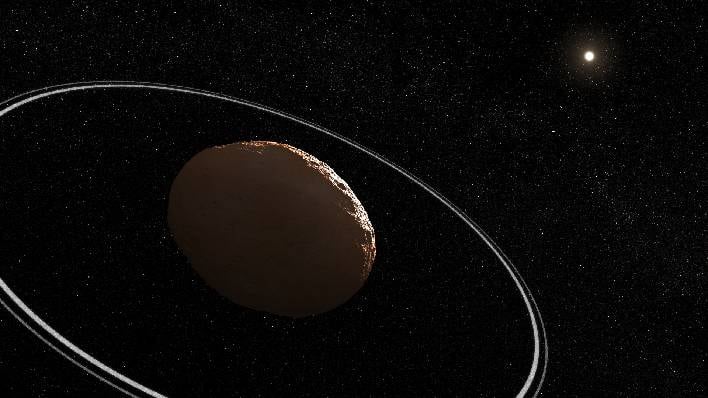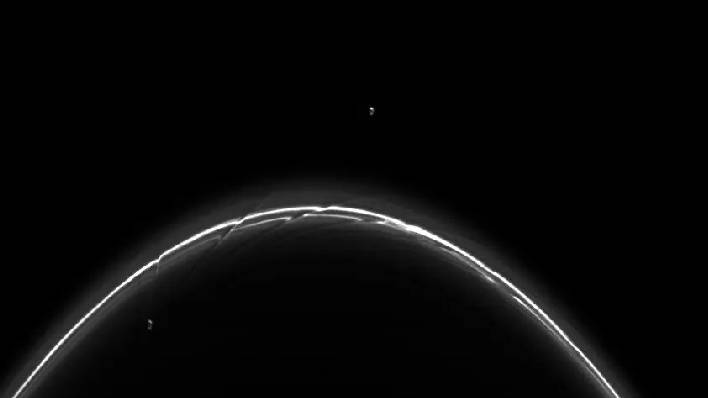Activity Around Uranus Has Researchers Stumped But They Have A Theory

Chariklo, classified as a Centaur, was the first asteroid ever found to have a ring system. According to NASA, Chariklo orbits between more than 2 billion miles away beyond the orbit of Saturn. Its rings were first detected in 2013. Scientists used a new technique in 2023 with NASA’s James Webb Space Telescope to capture shadows of starlight cast by the thin rings of Chariklo.
“Rings around minor planets have only been recently discovered, and only a small number of such systems are currently known,” remarked Amanda Sickafoose, lead author of “Numerical Simulations of (10199) Chariklo’s Rings With a Resonant Perturber.” Sickafoose added, “There has been significant research into dazzling rings around the giant planets; however, the mechanisms of ring formation and evolution around small objects are not well understood. We’ve shown that one of the possibilities for thin rings to exist around small bodies is that they are being sculpted by a small satellite.”

“We think that the ring particles are primarily made of water ice, like those at the giant planets. We do not know the exact characteristics, such as how ‘hard’ or ‘soft’ the ring particles are when they collide, or the particle-size distribution. Further simulations can help constrain those properties,” Sickafoose explained.
Unfortunately, imaging a satellite this size would require direct-imaging beyond the limits currently available. This means indirect methods or a spacecraft mission would be needed to discover it.
An alternate mechanism has also been proposed, in that Chariklo has a gravitational anomaly on its surface and the rings are in resonance with the spin of the nucleus. Sickafoose remarked, “The physics that act on the ring particles are similar for both a satellite or a spin-orbit resonance with a gravitational anomaly.”
Sickafoose added that by most reasonable assumptions, Chariklo’s rings are located in or around the Roche limit. The Roche limit is defined as the rough distance beyond which rings should not exist due to the material starting to accrete into moons. Sickafoose remarked, “A satellite in this situation can perturb the ring material and prevent it from accreting, similar to what is seen in Saturn’s F ring.”

